15th Century BC to 15th Century AD
A brief historical overview to help students of Nabataean history understand what was taking place in other parts of the world, and how these changes affected Nabataea
The Dawn of History
The history of China, as documented by ancient writings, dates back some 3,300 years. There is now mounting evidence of several still more ancient cultures that flourished between 2500 and 2000 B.C. in central China and the lower Huang He (Yellow River) Valley of north China. For many centuries tribes of people migrated, mixed, and developed their civilizations. As the river basins of China were relatively isolated from other parts of the globe distinctive systems of writing, philosophy, art, and political organization slowly developed and came to be recognizable as ‘Chinese civilization.’
Over the centuries the Chinese developed a strong sense of their real and mythological origins. Since very early times they have kept voluminous records of their history and the development of their civilization. These records cover not only China but also many of its neighbors, and even mention places as far away as Arabia and Rome.
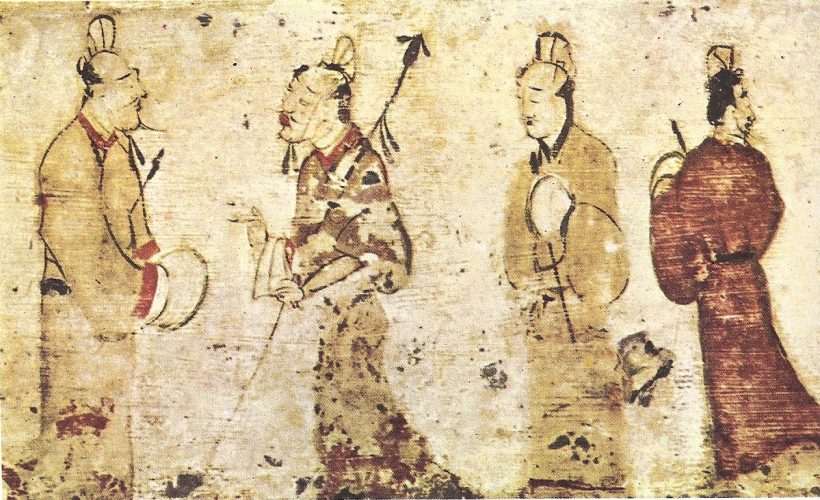
.
Ancient Chinese history was written mostly by members of the wealthy ruling class who provided their head of state with information to guide or justify his policies. These accounts usually focused on politics and colorful court histories that describe the Chinese pattern of ruling dynasties, one following another in a cycle of ascent, achievement, decay, and rebirth under a new family.
Another recurrent theme in Chinese history is that of the Chinese struggle against the threat posed to their safety and way of life by non-Chinese peoples on the margins of their territory. For centuries the Chinese struggled against the people of the north, until in the thirteenth century, the Mongols from the northern steppes conquered all China. This left the Chinese with an inherent fear of invasion from the north.
For centuries virtually all interaction with foreigners came from the less developed societies along China’s land borders. This limited exposure shaped the Chinese view of the outside world. The Chinese saw their domain as the only self-sufficient center of the universe and derived from this image the traditional (and still used) Chinese name for their country ‘Zhongguo,’ literally, Middle Kingdom or Central Nation. China saw itself surrounded on all sides by barbaric people whose cultures were demonstrably inferior by Chinese standards.

Pangu, who founded China.
The Ancient Dynasties
Chinese civilization, as described in mythology, begins with Pangu, the creator of the universe, and a succession of legendary sage-emperors and culture heroes who taught the ancient Chinese to communicate and to find sustenance, clothing, and shelter. The first prehistoric dynasty is said to be Xia, from about the twenty-first to the sixteenth century B.C. Until scientific excavations were made at early bronze-age sites at Anyang, Henan Province, in 1928, it was difficult to separate myth from reality in regard to the Xia. But since then, and especially in the 1960s and 1970s, archaeologists have uncovered urban sites, bronze implements, and tombs that point to the existence of Xia civilizations in the same locations cited in ancient Chinese historical texts. At minimum, the Xia period marked a stage between the late Neolithic cultures and the typical Chinese urban civilization of the Shang dynasty.
Shang Dynasty
First recorded dynasty was known as the Shang Dynasty. (1700 - 1027 BC) Evidence for this dynasty comes from thousands of archaeological finds located in and around the Huang He Valley, the cradle of Chinese civilization. The Shang dynasty (also called the Yin dynasty in its later stages) is believed to have been founded by a rebel leader who overthrew the last Xia ruler. The new civilization was based on agriculture, augmented by hunting and animal husbandry. During the Shang Dynasty a writing system was developed, as revealed in archaic Chinese inscriptions found on tortoise shells and flat cattle bones (commonly called oracle bones). The use of bronze was also discovered, making this, in effect the equivalent of the Chinese Bronze Age. A number of ceremonial bronze vessels with inscriptions date from the Shang period, and the workmanship on the bronzes attests to the high level of civilization that was reached at this time.
A line of hereditary Shang kings ruled over much of northern China, and Shang troops fought frequent wars with neighboring settlements and nomadic herdsmen from the inner Asian steppes. The capital cities, one of which is near the modern city of Anyang, were centers of glittering court life. Court rituals to propitiate spirits and to honor sacred ancestors were highly developed. In addition to his secular position, the king was the head of the Shang religion. This religion was based on ancestor and spirit worship. Evidence from the royal tombs indicates that royal personages were buried with articles of value, presumably for use in the afterlife. Perhaps for the same reason, hundreds of commoners, who may have been slaves, were buried alive with the royal corpse. The Shang Dynasty was overthrown by tribesmen from the West around 1030 BC giving rise to the Zhou Dynasty
Zhou Dynasty
The last Shang ruler, a despot according to standard Chinese accounts, was overthrown by a chieftain of a frontier tribe called Zhou, which had settled in the Wei Valley in modern Shaanxi Province. The Zhou dynasty had its capital at Hao, near the city of Xi’an, or Chang’an, as it was known in its heyday in the imperial period. Sharing the language and culture of the Shang, the early Zhou rulers, through conquest and colonization, gradually extended Shang/Zhou culture through much of China, north of the Chang Jiang (Yangtze River). The Zhou dynasty lasted from 1027 to 221 BC. It was the religious leaders and philosophers of this period who first expressed the doctrine of the “mandate of heaven” (divine ruler-ship), the notion that the ruler (the “son of heaven”) governed by divine right but that his dethronement would prove that he had lost the mandate. This doctrine explained and justified the demise of the two earlier dynasties and at the same time supported the legitimacy of present and future rulers.
The term feudal has often been applied to the Zhou period because the Zhou’s early decentralized rule has been compared with medieval rule in Europe. At most, however, the early Zhou system was proto-feudal, being a more sophisticated version of earlier tribal organization, in which effective control depended more on familial ties than on feudal legal bonds. Whatever feudal elements there may have been, they decreased as time went on. Zhou rulers amalgamated many city-states and progressively established centralized and increasingly impersonal political and economic institutions. These developments, which occurred in the latter Zhou period, were manifested by greater central control over local governments and regulated agricultural taxation.
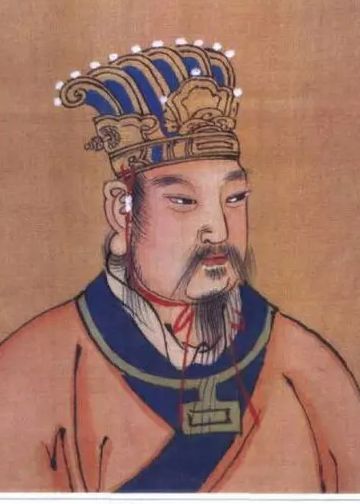
Zhou Dynasty (1046-256 BCE)
In 771 BC the Zhou court was sacked, and its king was killed by invading barbarians who were allied with rebel lords. The capital was moved eastward to Luoyang in present-day Henan Province. Because of this shift, historians divide the Zhou era into Western Zhou (1027-771 BC) and Eastern Zhou (770-221 BC). With the royal line broken, the power of the Zhou court gradually diminished and the fragmentation of the kingdom accelerated. Eastern Zhou divides into two sub periods. The first, from 770 to 476 B.C., is called the Spring and Autumn Period, after a famous historical chronicle of the time; the second is known as the Warring States Period (475-221 BC).
Spring and Autumn and Warring States periods
The Spring and Autumn and Warring States periods have been classified by some as the Golden Age of China. Although this period was still marked by disunity and civil strife it witnessed an unprecedented era of cultural prosperity. The atmosphere of reform and new ideas was attributed to the struggle for survival among warring regional lords who competed in building strong and loyal armies and in increasing economic production to ensure a broader base for tax collection. To achieve these economic, military, and cultural developments, the regional lords needed ever-increasing numbers of skilled, literate officials and teachers. Thus education standards rose. Also during this time, commerce was stimulated through the introduction of coinage and technological improvements. Iron came into general use, making it possible to not only forge weapons of war but to also manufacture farm implements. Large public works such as flood control, irrigation projects, and canal digging were undertaken. Enormous walls were built around cities and along the broad stretches of the northern frontier.
The Great Wall of China was started in the Zhou dynasty, somewhere around.400 BC to protect their kingdom against the nomadic tribes from the North and West. During the Spring and Autumn and Warring States periods the Great Wall of China was considerable expanded. Building continued until c.1500 AD when it eventually reached a length of 2400 kilometers.
During this period a number of important technological inventions came into being, such as the horse collar (3rd Century BC), iron production (by 119 BC there were 46 state run iron foundries), and irrigation, leading to better harvests and cleaner water.
This period also saw many different philosophies developed. New thought was so abundant that the era is often known as that of the Hundred Schools of Thought. From the Hundred Schools of Thought came many of the great classical writings on which Chinese practices were to be based for the next two and a half millennia. Many of these thinkers were itinerant intellectuals who, besides teaching their disciples, were employed as advisers to one or another of the various state rulers on the methods of government, war, and diplomacy.
The body of thought that had the most enduring effect on subsequent Chinese life was that of the School of Literati, often called the Confucian School in the West. The written legacy of the School of Literati was embodied in the Confucian Classics, which were to become the basis for the order of traditional society. Confucius (551-479 BC), also called Kong Zi, or Master Kong, looked to the early days of Zhou rule for an ideal social and political order. He believed that the only way such a system could be made to work properly was for each person to act according to prescribed relationships. “Let the ruler be a ruler and the subject a subject,” he said, but he added that to rule properly a king must be virtuous. To Confucius, the functions of government and social stratification were facts of life to be sustained by ethical values. His ideal was the junzi (ruler’s son), which came to mean gentleman in the sense of a cultivated or superior man.
Mencius (372-289 BC), or Meng Zi, was a Confucian disciple who made major contributions to the humanism of Confucian thought. Mencius declared that man was by nature good. He expostulated the idea that a ruler could not govern without the people’s tacit consent and that the penalty for unpopular, despotic rule was the loss of the “mandate of heaven.” The effect of the combined work of Confucius, the codifier and interpreter of a system of relationships based on ethical behavior, and Mencius, the synthesizer and developer of applied Confucian thought, was to provide traditional Chinese society with a comprehensive framework on which to order virtually every aspect of life. Over the years that followed, there were additions to the main body of Confucian thought, both from within and outside the Confucian school. Interpretations were made to suit or influence contemporary society, and this made Confucianism dynamic, while preserving a fundamental system of model behavior based on ancient texts.
Completely opposed to Mencius, for example, was the interpretation of Xun Zi (ca. 300-237 BC), another Confucian follower. Xun Zi preached that man is innately selfish and evil and that goodness is attainable only through education and conduct befitting one’s status. He also argued that the best government is one based on authoritarian control, not ethical or moral persuasion. Xun Zi’s unsentimental and authoritarian inclinations were developed into the doctrine embodied in the School of Law, or Legalism. The doctrine was formulated by Han Fei Zi (233 BC) and Li Si (208 BC), who maintained that human nature was hopelessly selfish and therefore the only way to preserve the social order was to impose discipline from above and to enforce laws strictly. The Legalists exalted the state and sought its prosperity and martial prowess above the welfare of the common people. Legalism became the philosophic basis for the imperial form of government.
When the most practical and useful aspects of Confucianism and Legalism were synthesized in the Han period (206 BC-AD 220, paralleling the Nabataean Empire), a system of governance came into existence that was to survive largely intact until the late nineteenth century. Taoism, the second most important stream of Chinese thought, also developed during the Zhou period. Its formulation is attributed to the legendary sage Lao Zi (Old Master), said to predate Confucius, and Zhuang Zi (369-286 BC). The focus of Taoism was the individual in nature of society, rather than the individual in society. Taoism holds that the goal of life for each individual is to find one’s own personal adjustment to the rhythm of the natural (and supernatural) world, to follow the Way (dao) of the Universe. In many ways, Taoism was the opposite of rigid Confucian moral teaching. It served many of its adherents as a complement to the daily order that Confucianism imposed on their daily lives. A scholar on duty as an official would usually follow Confucian teachings but at leisure or in retirement might seek harmony with nature, as a Taoist recluse.
Another strain of thought dating to the Warring States Period is the school of yin-yang and the five elements. The theories of this school attempted to explain the universe in terms of basic forces in nature, the complementary agents of yin (dark, cold, female, negative) and yang (light, hot, male, positive) and the five elements (water, fire, wood, metal, and earth). In later periods these theories came to have importance both in philosophy and in popular belief, and have impacted modern western New Age philosophies.
Still another school of thought was based on the doctrine of Mo Zi (470-391 BC), or Mo Di. Mo Zi believed that “all men are equal before God” and that mankind should follow heaven by practicing universal love. Advocating that all action must be utilitarian, Mo Zi condemned the Confucian emphasis on ritual and music. He regarded warfare as wasteful and advocated pacifism. Mo Zi also believed that unity of thought and action were necessary to achieve social goals. He maintained that the people should obey their leaders and that the leaders should follow the will of heaven.
Although Moism failed to establish itself as a major school of thought, its views are said to be “strongly echoed” in Legalist thought. In general, the teachings of Mo Zi left an permanent impression on the Chinese mind.
The First Imperial Period 221 BC - 207 BC
Much of what came to constitute China proper was unified for the first time in 221 BC, about the same time that the ancient Nabataean Kingdom was being established in Arabia. In that year, the western Chinese state of Qin, the most aggressive of the Warring States, subjugated the last of its rival states. (Qin, in Wade-Giles romanization is Ch’in, from which the English word China was probably derived.) Once the king of Qin consolidated his power, he took the title Shi Huangdi or First Emperor. This title had previously been reserved only for deities and the mythological sage-emperors. He then imposed Qin’s centralized, nonhereditary, bureaucratic system on his new empire. In subjugating the six other major states of Eastern Zhou, the Qin kings had relied heavily on Legalist scholars and advisers. Centralization was achieved by ruthless methods, and initially focused on standardizing the legal codes, bureaucratic procedures, forms of writing, coinage, and the pattern of thought and scholarship.
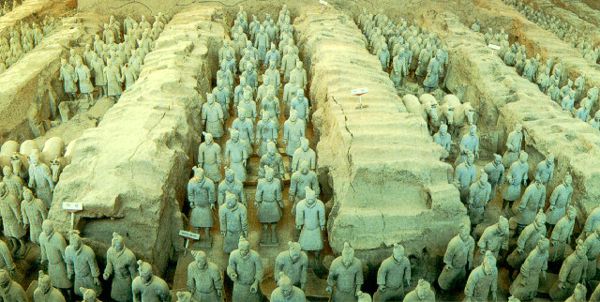
Terracotta warriors from the Quin dynasty
To silence criticism of imperial rule, the kings banished or put to death many dissenting Confucian scholars and confiscated and burned their books. Qin aggrandizement was aided by frequent military expeditions pushing forward the frontiers in the north and south. To fend off barbarian intrusion, the fortification walls built by the various warring states were connected to make the 5,000- kilometer-long Great Wall. What is commonly referred to as the Great Wall is actually four great walls rebuilt or extended during the Western Han, Sui, Jin, and Ming periods, rather than a single, continuous wall. At its extremities, the Great Wall reaches from northeastern Heilongjiang Province to northwestern Gansu. A number of public works projects were also undertaken to consolidate and strengthen the new imperial rule. These activities required enormous levies of manpower and resources, not to mention repressive measures. Revolts broke out as soon as the first Qin emperor died in 210 BC. His dynasty ended less than twenty years after it began. The imperial system initiated during the Qin dynasty, however, set a pattern that was developed over the next two millennia.
After a short civil war, a new dynasty, called the Han Dynasty (206 BC- AD 220), emerged with its capital at Chang’an. This new empire retained much of the Qin administrative structure but it moved away from centralized rule by establishing vassal principalities in some areas for the sake of political convenience. The Han rulers modified some of the harsher aspects of the previous dynasty; Confucian ideals of government, out of favor during the Qin period, were adopted as the creed of the Han Empire, and Confucian scholars gained prominent status as the core of the civil service. A civil service examination system also was initiated. Intellectual, literary, and artistic endeavors revived and flourished. The Han period produced China’s most famous historian, Sima Qian (145-87 BC), whose Shiji (Historical Records) provides a detailed chronicle from the time of a legendary Xia emperor to that of the Han emperor Wu Di(141-87 B.C.). Technological advances also marked this period. Many of the great Chinese inventions, paper and porcelain, ink, brushes, irrigation, water clocks, sundials, and seismographs all date from Han times.
The Han dynasty, after which the members of the ethnic majority in China, the “people of Han,” are named, was also noted for its military prowess. The empire expanded westward as far as the rim of the Tarim Basin (in modern Xinjiang/Uyghur Autonomous Region), making relatively secure caravan traffic across Central Asia possible. This caravan route stretched across Asia to Antioch, Baghdad, and Rome. The paths of caravan traffic are often called the “silk route” because the route was used to export Chinese silk to the Roman Empire. Chinese armies also invaded and annexed parts of northern Vietnam and northern Korea toward the end of the second century BC. Han control of peripheral regions was generally insecure, however. To ensure peace with non-Chinese local powers, the Han court developed a mutually beneficial “tributary system.” Non-Chinese states were allowed to remain autonomous in exchange for symbolic acceptance of Han lordship. Ties were confirmed and strengthened through intermarriages at the ruling level and periodic exchanges of gifts and goods.
After 200 years, Han rule was interrupted briefly (9-24 AD) by the rise of Wang Mang, a reformer, and then it was restored for another 200 years. The Han rulers, however, were unable to adjust to what centralization had wrought: a growing population, increasing wealth and resultant financial difficulties and rivalries, and ever-more complex political institutions. Riddled with the corruption the Han Empire collapsed around 220 AD.
During the Han Dynasty there were a number of notable advances such as the standardization of weights, measures, coinage, axle widths, as well as the simplification and standardization of written language across the empire.
During the Han dynasty, the first contact with the outside world was established. As a result, maritime activity increased, with Chinese junks trading as far away as Sri Lanka’s northern port of Balk Bay. The Silk Road caravan routes were opened up and goods were exchanged with countries as remote as Greece. During this time Buddhism was also introduced from India.
The fall of the Han dynasty was brought about by corrupt Mandarins, who had been hand-picked in scholarly exams. They sided with landlords and oppressed the peasants, causing widespread revolt in 220 AD caused the fall of the dynasty.
220 AD - 618 AD
During this period the Chinese empire underwent gradual disintegration. It wasn’t until the rise of the T’ang Dynasty in 618 AD that China would rise again to be a great empire.
T’ang Dynasty 618 AD - 907 AD
During this period China became the most powerful and largest empire on earth. Art and poetry flourished, and gunpowder and printing were invented. 868 AD. Industry was at an all time high, and in 806 AD it was recorded that 13,500 tones of iron were produced in China.Trade and contact occurred beyond the borders. Eventually Muslim armies encroached from the West and the power of China waned. Foreign religions were eventually banned and there was gradual disintegration and war.
Sung Dynasty 960 AD - 1223 AD
During this time rule and order were re-established. Gunpowder was used for military rockets making the Chinese armies strong again. Sea trade was helped by the widespread adoption of the compass. Large ocean-going junks traveled to the East Indies, Africa, and India. Records indicate that in 1078 AD, 125,000 tones of iron was produced per year! Then in 1012 AD, a new strain of rice was introduced from Vietnam that doubled or tripled the yield or traditional rice. However, the Mongols rose to power in the north and by 1223 AD the Mongol ruler, Genghis Khan had conquered most of Northern China. Kublai Khan then ruled after him, (known as the Yüan Dynasty) from 1264 AD - 1356 AD. During this period Chinese maritime trade was still expanding.
Ming dynasty 1368 AD
Between 1405 and 1430 AD the fleets of admiral Zheng He journeyed to Africa, India, Ceylon, Sumatra and possibly even Australia. (See China’s Maritime History) His ships were massive, five times the size of contemporary European caravels. They could carry several hundred men and a year’s provision. These ships also had watertight bulkheads and sternpost rudders. With the knowledge of compasses and the ability to navigate by the stars these fleets crossed the Indian Ocean to Africa. Their task was to bring tribute from foreign countries to the Ming emperors. In the early 15th Century a fleet of 60 ships carrying 40,000 troops ventured to the East coast of Africa.
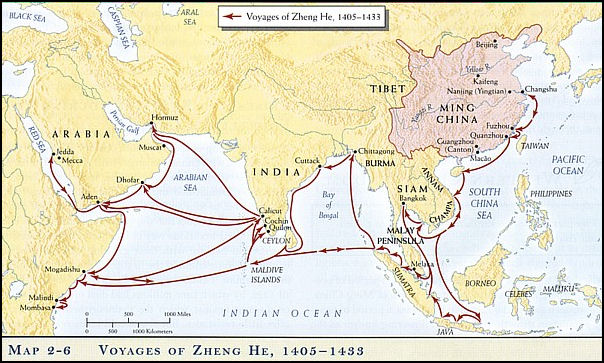
According to Chinese records Zheng He traveled the Indian Ocean. These are his recorded voyages. There is no evidence he traveled further than this.
1433 AD
In 1433 this exploration suddenly ceased. The emperor banned all merchants from going abroad. It was claimed that there was little use for foreign goods. Revenue from foreign trade suddenly dropped from 20% in the earlier Sung dynasty to less than 1% in this part of the Ming dynasty. Since the Ming emperors came from an agrarian background they focused on This was due to reunification and better land use, opening internal canals, rather than trade overseas. Overseas trade was forbidden under punishment of death.
Conclusion
It is possible to map Chinese History into a number of great periods. The first was the Han period, 221 BC - 207 BC, then the T’ang period 618 AD - 907 AD, and finally the Sung period and the beginning of the Ming Period/ 960 AD - 1430 AD. During these periods Chinese civilization flourished. While many different reasons can be given, one of the main reasons appears to be contact with the outside world. During these periods caravans traveled over the Silk Road, and ships visited the ports of China. These merchants brought not only goods, but only ideas and developments from afar.
When Marco Polo arrived in Canton, in the late 1200’s, the city known to Polo as Zaitun, was one of the world’s greatest ports with more than 100,000 Arab traders living in the area. This was during the Ming Empire when contact was being remade between Europe and China. 200 years later the Chinese had built huge fleets of trading vessels to travel to the west.
While it is unclear if Nabataean merchants ever reached China, they certainly did trade with Chinese vessels, probably exchanging goods in Palk Bay, on the north tip of Sri Lanka. This trade was most likely one of the elements that helped the Han Dynasty rise to power.
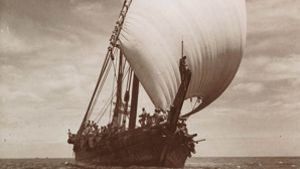
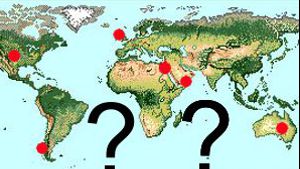
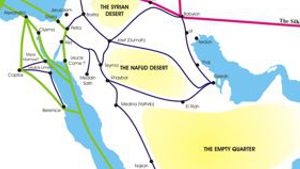

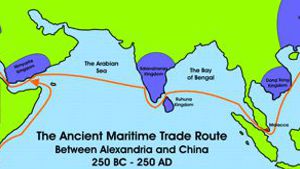





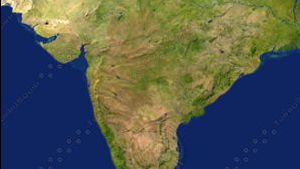
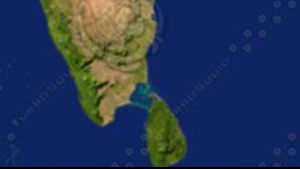

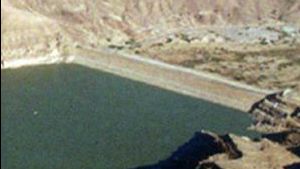
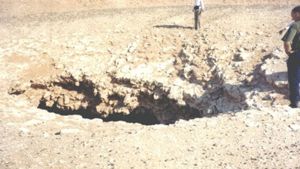

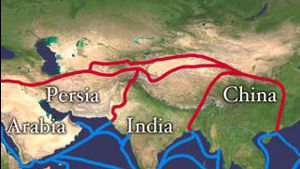
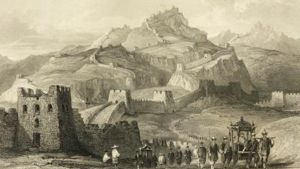
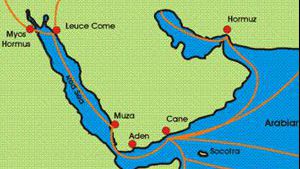
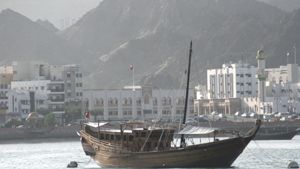
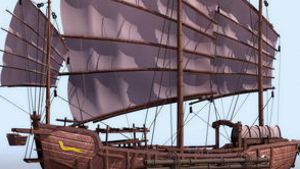


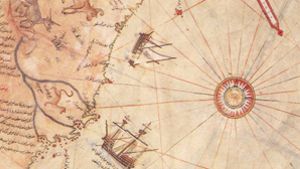
Page Discussion
Membership is required to comment. Membership is free of charge and available to everyone over the age of 16. Just click SignUp, or make a comment below. You will need a user name and a password. The system will automatically send a code to your email address. It should arrive in a few minutes. Enter the code, and you are finished.
Members who post adverts or use inappropriate language or make disrespectful comments will have their membership removed and be barred from the site. By becoming a member you agree to our Terms of Use and our Privacy, Cookies & Ad Policies. Remember that we will never, under any circumstances, sell or give your email address or private information to anyone unless required by law. Please keep your comments on topic. Thanks!